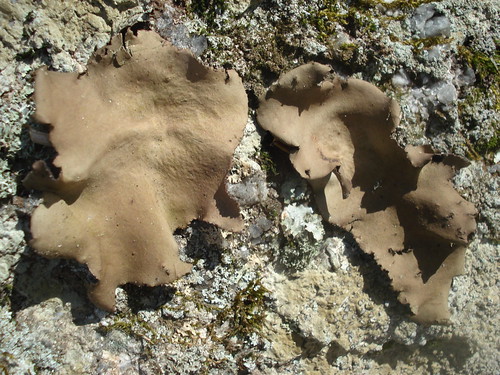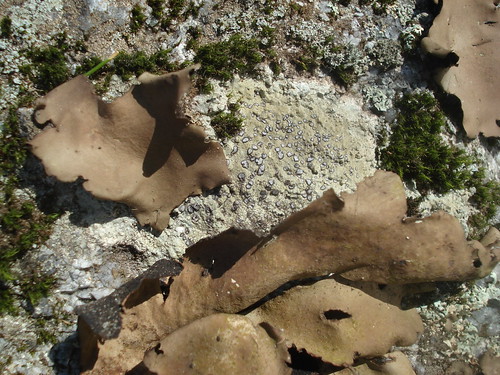 And Seton's favorite wild edible at this famine time of year? Rock tripe. Which tells you something about the availability of wild foods in winter. I've never eaten tripe (cow intestines), so I'll have to leave it to others to say whether it's an apt description. But I suspect this cardboardy lichen got its common name because it's pretty low on the food totem pole. Rock tripe, Seton wrote, "is not delicious food, nor is it highly nutritious, but it will sustain life, and every traveler should know what it is like and how to use it."
And Seton's favorite wild edible at this famine time of year? Rock tripe. Which tells you something about the availability of wild foods in winter. I've never eaten tripe (cow intestines), so I'll have to leave it to others to say whether it's an apt description. But I suspect this cardboardy lichen got its common name because it's pretty low on the food totem pole. Rock tripe, Seton wrote, "is not delicious food, nor is it highly nutritious, but it will sustain life, and every traveler should know what it is like and how to use it."Rock tripe grows in ragged pieces that people describe as looking like lettuce leaves or dried orange peels. They can grow up to 8 inches across, but most are probably in the 2 to 4 inch range. Each piece is anchored to the rock at a small spot in the middle, giving the lichen its Latin name: Umbilicaria. The top can vary in color from brown to grey, and the underside is darker -- often black. You'll often see it growing in clusters, covering the surface of a large boulder. Keep an eye out when you're walking in a rocky place, like the parks along the Potomac.
To me, the most interesting thing about rock tripe is the fact that it is not actually one organism, but two. Lichens, as you may recall from biology class, consist of a fungus living in a symbiotic relationship with algae. Or, as lichenologist Trevor Goward puts it, "lichens are fungi that have discovered agriculture." The fungus provides a structure that retains water and captures minerals; the algae photosynthesizes to provide sugars that are also food for the fungus. Together, they can colonize areas where neither fungi nor algae would otherwise survive.
Unlike most mushrooms and plants, l
 ichens persist year-round. And, rock tripe has been shown to contain one-third more calories than equal amounts of honey or corn flakes. Perhaps this is why rock tripe has been eaten for centuries, at least as a survival food. The Cree apparently included it regularly in soups as a thickener; other Native American tribes used it as a food of last resort. And it was from the tribes that European settlers learned the value of this strange food. Washington's troops are said to have used it to help them survive the winter at Valley Forge.
ichens persist year-round. And, rock tripe has been shown to contain one-third more calories than equal amounts of honey or corn flakes. Perhaps this is why rock tripe has been eaten for centuries, at least as a survival food. The Cree apparently included it regularly in soups as a thickener; other Native American tribes used it as a food of last resort. And it was from the tribes that European settlers learned the value of this strange food. Washington's troops are said to have used it to help them survive the winter at Valley Forge. Should you eat rock tripe? We've been known to nibble on a piece now and then, just because we can. We just break a small piece off and chew (and chew, and chew). Folks who've had more experience with the stuff say that if you're going to eat a lot, it's best to dry it, then boil it for about an hour, which will soften it up considerably. As with all wild foods, check your identification and be sure of what you're working with. And, start with a small quantity until you have a sense of how your body is going to react.
Here's hoping you're never in a situation when you're eating rock tripe out of anything more than curiosity.
Photo credit: Paul J. Morris; click on photos to go to their pages on Flickr.


